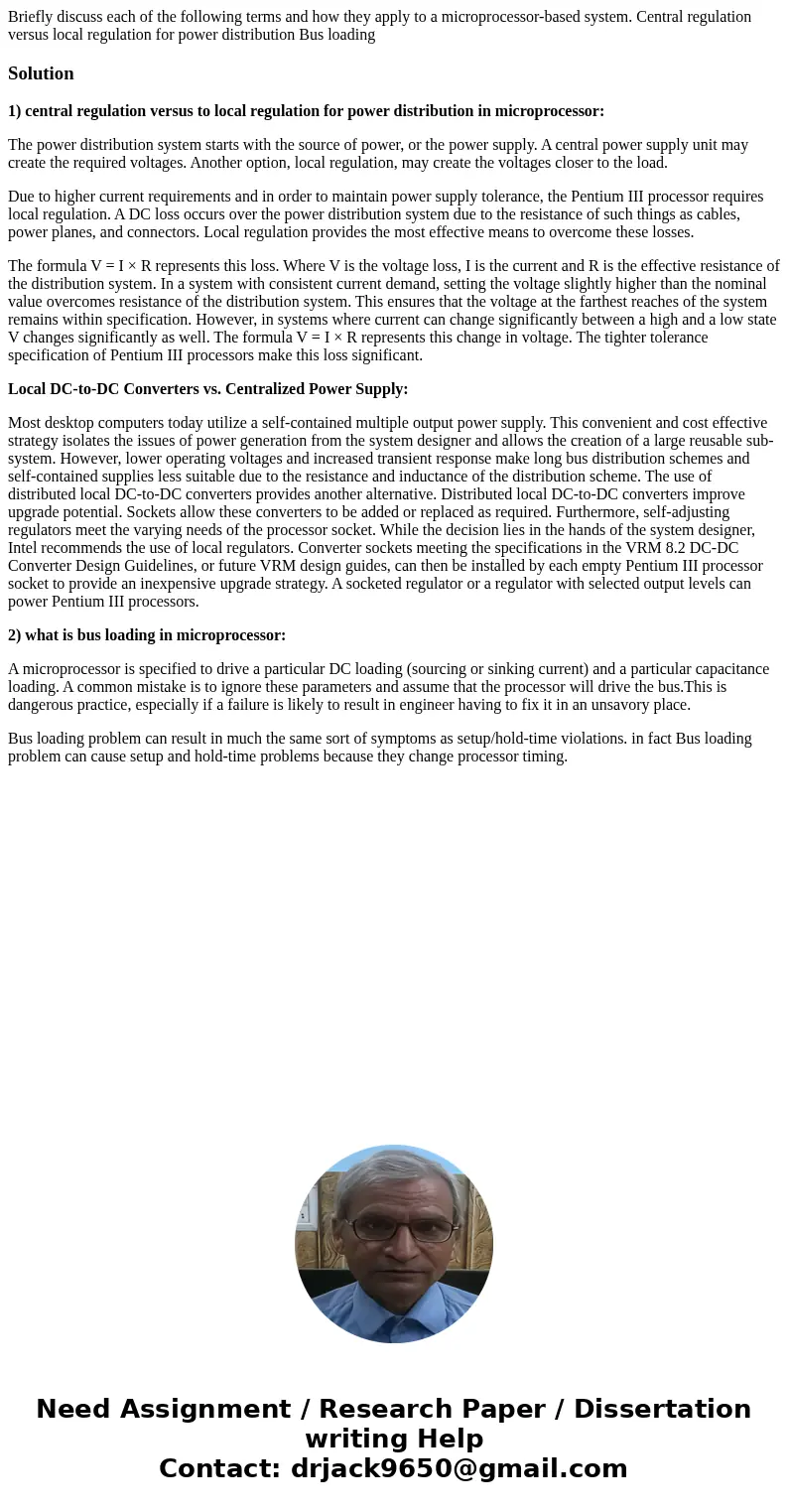Briefly discuss each of the following terms and how they app
Solution
1) central regulation versus to local regulation for power distribution in microprocessor:
The power distribution system starts with the source of power, or the power supply. A central power supply unit may create the required voltages. Another option, local regulation, may create the voltages closer to the load.
Due to higher current requirements and in order to maintain power supply tolerance, the Pentium III processor requires local regulation. A DC loss occurs over the power distribution system due to the resistance of such things as cables, power planes, and connectors. Local regulation provides the most effective means to overcome these losses.
The formula V = I × R represents this loss. Where V is the voltage loss, I is the current and R is the effective resistance of the distribution system. In a system with consistent current demand, setting the voltage slightly higher than the nominal value overcomes resistance of the distribution system. This ensures that the voltage at the farthest reaches of the system remains within specification. However, in systems where current can change significantly between a high and a low state V changes significantly as well. The formula V = I × R represents this change in voltage. The tighter tolerance specification of Pentium III processors make this loss significant.
Local DC-to-DC Converters vs. Centralized Power Supply:
Most desktop computers today utilize a self-contained multiple output power supply. This convenient and cost effective strategy isolates the issues of power generation from the system designer and allows the creation of a large reusable sub-system. However, lower operating voltages and increased transient response make long bus distribution schemes and self-contained supplies less suitable due to the resistance and inductance of the distribution scheme. The use of distributed local DC-to-DC converters provides another alternative. Distributed local DC-to-DC converters improve upgrade potential. Sockets allow these converters to be added or replaced as required. Furthermore, self-adjusting regulators meet the varying needs of the processor socket. While the decision lies in the hands of the system designer, Intel recommends the use of local regulators. Converter sockets meeting the specifications in the VRM 8.2 DC-DC Converter Design Guidelines, or future VRM design guides, can then be installed by each empty Pentium III processor socket to provide an inexpensive upgrade strategy. A socketed regulator or a regulator with selected output levels can power Pentium III processors.
2) what is bus loading in microprocessor:
A microprocessor is specified to drive a particular DC loading (sourcing or sinking current) and a particular capacitance loading. A common mistake is to ignore these parameters and assume that the processor will drive the bus.This is dangerous practice, especially if a failure is likely to result in engineer having to fix it in an unsavory place.
Bus loading problem can result in much the same sort of symptoms as setup/hold-time violations. in fact Bus loading problem can cause setup and hold-time problems because they change processor timing.

 Homework Sourse
Homework Sourse